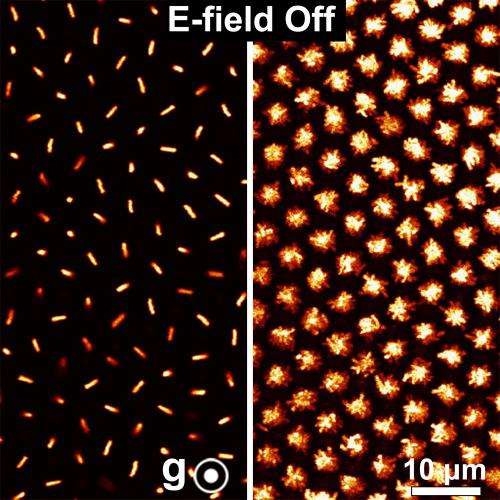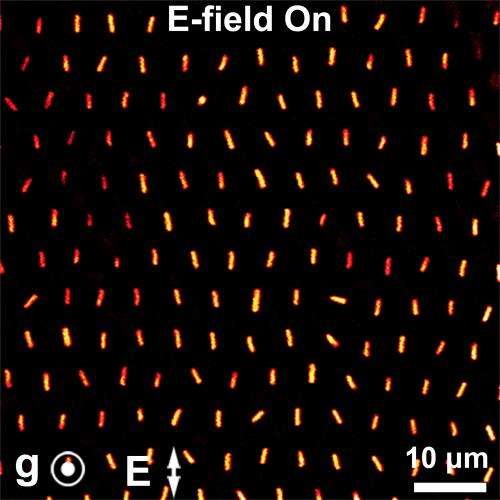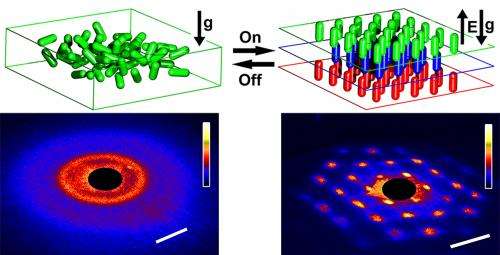Plastic crystals open up possibilities for novel materials

(Phys.org) —Researchers of the Dutch FOM Foundation have discovered that plastic crystals, which constitute a special type of matter, can be made with the help of rod-shaped particles. The crystals could be used, for example, in colour monitor screens based on electronic ink. The researchers published their results on 21 January in Nature Communications.
In the article, FOM PhD Thijs Besseling and FOM postdoc dr. Bing Liu together with their colleagues from Utrecht University show how they produced plastic crystals with the help of rod-shaped particles. Liu and Besseling carried out their research under the supervision of FOM workgroup leader prof.dr. Alfons van Blaaderen and dr. Arnout Imhof.
Solid but fluid
Plastic crystals are related to the better-known liquid crystals. In plastic crystals elongated molecules are arranged in a regular three-dimensional lattice, as is the case in a solid substance. However, unlike solid particles, these particles are free to rotate just like in a liquid. That is because the particles are electrically charged as a result of which they repel each other. That creates just enough freedom of movement to rotate. The outcome is a special aggregative state that lies in between the liquid and solid phases. The substance is a solid but at the same time so motile that some plastic crystals collapse under their own weight.
The FOM researchers have now created such a phase for the first time using colloids, particles with a size of between one and a thousand nanometres (a nanometre is one billionth of a metre). Their work makes it possible to quantitatively investigate the special phase of the plastic crystals at the particle level.

Glass phase
Their research led to the creation of a plastic glass phase. This is a phase in which the particles can still rotate but are not arranged in a regular lattice. Nevertheless, the material behaves as a solid substance.
The researchers discovered that an external electric field can be used to convert this phase into a 3D crystal in which a strict order does exist. First of all the electric field ensures that the free rotations disappear. An unexpected consequence of this is that the rods assume a regular 3D lattice as well. This process is reversible: as soon as the electrical field disappears the plastic glass phase returns.

The discovery opens up new possibilities for investigating the glass transition. That could provide interesting new insights, as the glass phase is still poorly understood. The Utrecht group has already started on the first steps of a study that must yield a better understanding of this phase.
In their publication the researchers also show that the switchable behaviour of the plastic glass phase is interesting for applications in monitor screens (as is the case for liquid crystals). The plastic crystals could, for example, be used in a colour monitor screen based on electronic ink.
Journal information: Nature Communications













.jpg)






